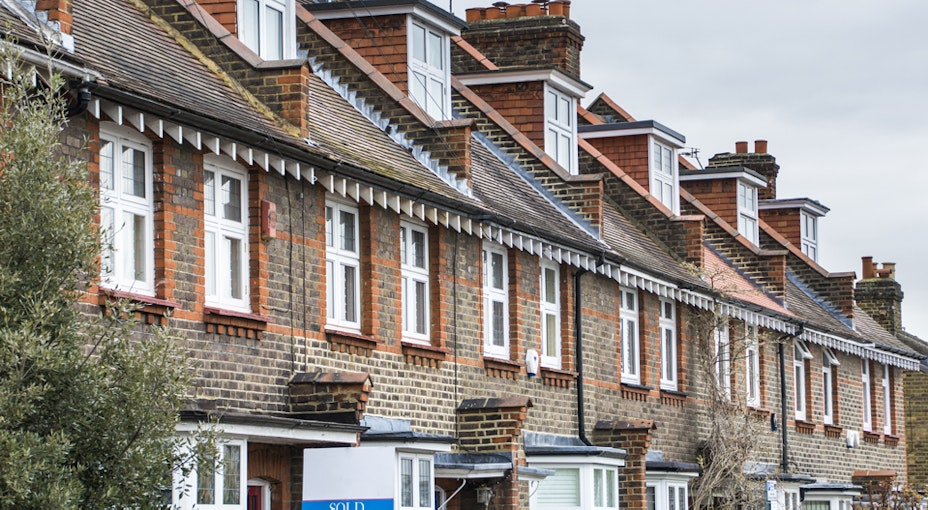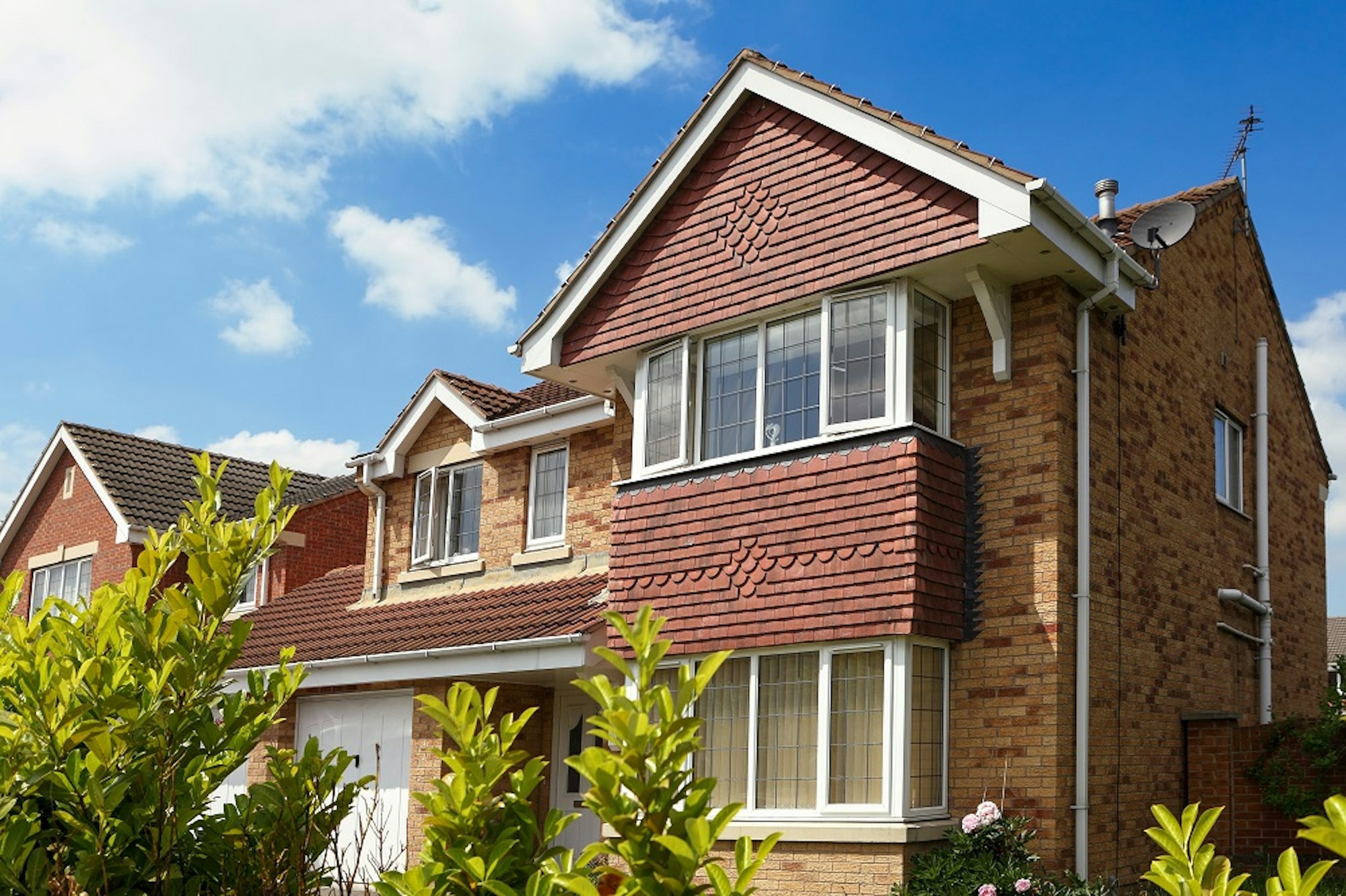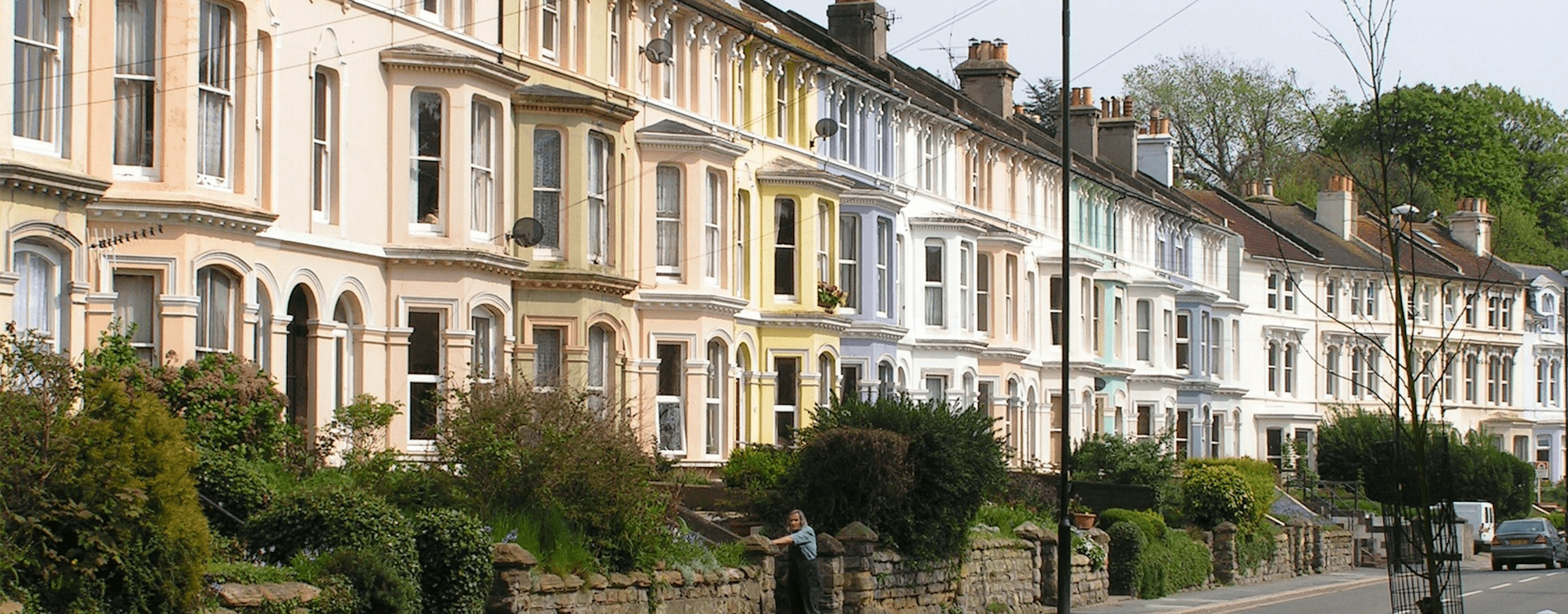Guide to building insurance
Owning a property comes with a lot of risks and responsibilities, whether you are a landlord or a homeowner.
By Alan Boswell Group

- What does building insurance cover?
- Understanding the basics of building insurance
- Core cover included in building insurance
- Additional cover that may be included or available as add-ons
- What is typically not covered by building insurance?
- Factors affecting the cost of building insurance
- Can you get different types of building insurance?
- Tips for getting the best building insurance cover
- FAQs
In this article
- What does building insurance cover?
- Understanding the basics of building insurance
- Core cover included in building insurance
- Additional cover that may be included or available as add-ons
- What is typically not covered by building insurance?
- Factors affecting the cost of building insurance
- Can you get different types of building insurance?
- Tips for getting the best building insurance cover
- FAQs
It doesn’t matter if you rent out a five-bedroom house, or a one bed bungalow having the right insurance in place is crucial. All property owners should have building insurance, but it is important to understand exactly what is covered under this policy. In this guide, we answer some of the most common building insurance questions.
What does building insurance cover?
When you own property, it’s essential to protect your investment with adequate building insurance cover. Often, if you have a residential mortgage or buy-to-let mortgage, your lender will almost certainly insist you have building insurance.
There are many types of building insurance out there, so it’s important you choose the right policy for your type of property. It’s also worth knowing about extra cover you can add to your building insurance, such as home emergency cover in case of boiler failure.
In this article, we look at the building insurance options open to you, situations where you may wish to take out additional cover, plus common exclusions that apply to policies.
Understanding the basics of building insurance
Building insurance covers the physical structure of your property, along with permanent fixtures and fittings. Sometimes it is combined with other types of cover (such as for contents, home emergency, or accidental damage) and sold as a general home insurance policy. Landlord building insurance may also be offered along with other covers, such as malicious damage by tenants or loss of rent.
Structural elements that are covered by building insurance include the walls, roof, floors, ceilings, windows, doors, and foundations. Most policies also cover outbuildings such as sheds, garages, and greenhouses, but be sure to check exactly what structures are insured. For example, some policies may not cover things like boundary walls, fences, driveways, and swimming pools.
When it comes to defining permanent fixtures and fittings, a popular method is to include anything that wouldn’t fall out of your home if you turned it upside down and shook it. These items include:
Fitted kitchens
Bathroom suites
Fitted wardrobes
Central heating systems, including the boiler and radiators
Pipes, drains, and water tanks
Electrical wiring
Permanent flooring, such as laminate or tiles (but not carpets)
Fixed solar panels.
When choosing cover, it’s vital that potential insurers fully understand your property. This ensures they can tailor policies to your exact needs and don’t leave vital things underinsured or uninsured.
Core cover included in building insurance
Most building insurance policies cover the structure and permanent fittings of your property against a core range of perils. These include:
Fire. Damage caused by fire, smoke, and explosions (such as one caused by a gas leak).
Storms. Damage caused by wind, rain, and hail, such as to roof tiles or chimneys, during a storm. Note that some policies exclude damage to fences, gates, garden walls, or other exterior structures.
Subsidence, heave, and landslip. These are types of damage caused by the ground moving beneath your property. Subsidence happens when the ground sinks or shifts, heave happens when the ground swells and pushes upwards, and landslip happens when the land moves laterally (such as on a slope). If your property has been subject to any of these events in the past, finding cover for the property may become more difficult and expensive.
Escape of water. Damage caused by burst pipes or leaks, such as from a water tank. Leaks resulting from gradual problems that have developed over time, or from a lack of maintenance, aren’t covered.
Theft and vandalism. This covers you for damage caused by thieves or vandalism. For example, if a thief damages locks, windows, doors, or permanent fixtures, you’ll be covered. Similarly, vandalism such as smashing fixtures or spraying graffiti on walls is insured. You should also be covered for the theft of fixtures such as radiators, kitchen units, or bathroom fittings. Note, though, that personal belongings are not covered under building insurance policies – you’ll need separate contents insurance for that.
Impact damage. Damage caused by vehicles, falling trees, or other objects that cause structural damage to your property. This also covers impact from aircraft or drones, or objects falling from them.
Riots and civil disturbances. You’ll normally be covered if your home is damaged during a riot or civil unrest.
Additional cover that may be included or available as add-ons
One of the main benefits of building insurance is that it is usually very flexible. This means you can often find policies that include additional types or cover, plus those that offer a range of extra covers as add-ons. Some of the most common types of optional or additional cover include the following:
Contents insurance. This will cover the contents of your property (furniture, appliances, etc) from the same core perils.
Accidental damage. This applies to non-deliberate damage to the building. For example, if you accidentally drill through a pipe or put your foot through the loft floor while doing DIY, you’d be covered.
Home emergency cover. This provides you with rapid response from tradespeople in the event of emergencies like boiler breakdowns, burst pipes, and infestation by some types of vermin.
Family legal cover. This can offer cover for legal costs associated with disputes such as property infringement, property damage, and breach of contract relating to the sale or purchase of your main home.
Excess protection. Building insurance policies usually have an excess – an amount you need to pay out of your own pocket before your insurer pays the rest of a claim. Excess protection insurance reimburses the cost of the excess charge, minimising the financial impact on you.
What is typically not covered by building insurance?
When choosing a building insurance policy, it’s essential to note that policies typically include exclusions. Below are some of the most common.
Wear and tear. Gradual deterioration due to age, neglect, rust, rot, or decay. Examples might include crumbling brickwork, mould from long-term damp, or perished roof felt.
Lack of maintenance. Damage caused by failing to maintain the property properly. This could include blocked gutters causing water to enter the property or saturate brickwork, or water damage caused by failure to repair loose roof tiles.
Faulty workmanship. Damage caused by poor workmanship or defective materials. For example, if DIY plumbing resulted in a flood, the damage probably wouldn’t be covered.
Gradual operating causes. This refers to damage caused by such things as slow leaks. For example, if a leak from a water tank had been causing damage over a period of time and had left it until the damage was more severe to make a claim, you wouldn’t be covered.
Damage caused by pests. Cover for damage caused by rodents, insects, or other pests can vary from policy to policy. Home emergency policies typically cover pest removal, but they usually do not cover the damage caused by mice, rats, squirrels, pigeons, or other pests.
Unoccupied properties. Building insurance normally places a limit on how long you can leave a property unoccupied (typically 30 days). If you exceed this, you can invalidate your policy. Unoccupied property insurance is better suited to this scenario (such as when you’re undertaking renovations or your rental home is between tenancies).
Deliberate damage. Damage that’s caused intentionally by the policyholder or a member of their household will not be covered.
Acts of war or terrorism. Check your policy wording, but most will exclude damage caused by acts of war or terrorism.
Factors affecting the cost of building insurance
The cost of building insurance is influenced by a range of factors, and just because a policy is cheap doesn’t mean it’s suitable for your needs. When assessing which policy to buy, bear in mind that the cost can be influenced by any of the following:
Rebuild cost. The more it would cost to rebuild your home from scratch, the higher your premium. The rebuild cost can often exceed the market value, as it includes not only materials, but labour, demolition costs, and professional fees.
Property location. Properties in areas with a higher risk of flooding and subsidence will be more expensive to insure. Similarly, policies for homes in postcodes with high burglary or vandalism rates will have higher premiums.
Property type and age. Older properties or those with non-standard construction may be more expensive to insure.
Excess. The more you agree to pay towards a claim, the lower your premium is likely to be.
Claims history. A history of previous claims can increase premiums, especially if you have claimed for expensive-to-repair issues such as subsidence.
Tenants. For landlords, a range of factors in relation to your tenants will impact the premium, for example, the number of tenants and their employment status.
Can you get different types of building insurance?
Yes, there are various types of building insurance designed for different situations and properties. These are some of the most common:
Home insurance. Designed for homeowners, this normally combines building insurance with contents insurance, giving you a single premium to pay for both.
Landlord building insurance. These policies are tailored to the buy-to-let market, often including cover for properties that are unoccupied between tenancies, malicious damage by tenants, and loss of rent (or alternative accommodation for tenants) if the property becomes uninhabitable. Landlords with multiple properties can also opt for property portfolio insurance.
Listed building insurance. If a listed building becomes damaged, there are rules and restrictions governing its repair (for example, see this article on Grade 2 listed restrictions). Specialist cover will help ensure that listed buildings are repaired using traditional techniques and materials where required.
Renovation insurance. If you need home insurance during building work, renovation insurance will cover you if you have moved out for its duration. You can also buy separate unoccupied property insurance if the home is unoccupied for a significant period for other reasons.
Unoccupied property insurance. This cover is appropriate for properties that are unoccupied for over a specified period of time (typically over 30 days), such as for second homes or let properties between tenants.
High-value home insurance. This is specialist cover for homes that have a high rebuild cost, contain high-value items, such as fine art or antiques, or both.
Tips for getting the best building insurance cover
Taking out an appropriate building insurance policy will give you peace of mind that you have the level and extent of cover that you need. These are our top tips for getting the best insurance for your personal requirements.
Disclose all relevant information. Always provide accurate information to the broker or insurer to avoid invalidating the policy. There’s no point buying a policy if it’s likely to be invalidated due to information you haven’t disclosed.
Accurately assess rebuild cost. The residential property sum insured should be based on the rebuild cost, not the market value. The BCIS Rebuilding Cost Calculator can help you determine the correct value.
Compare quotes. A broker will do the hard work for you to compare prices and cover from multiple insurers. If you choose to do this yourself, make sure you are comparing equal cover, as a policy that appears to be a low cost may not offer the level of cover you need.
Read policy wording carefully. Take time to understand a policy’s inclusions, exclusions, and limitations. If you have any questions, ask your broker or insurer to clarify.
Consider additional covers. Assess whether additional covers, like accidental damage or home emergency cover, are necessary. Most brokers and insurers will be able to combine multiple covers for a single premium.
Always maintain your property. Regularly maintain the property to prevent damage from wear and tear. This helps reduce the risk of damage, such as slow leaks, that won’t be covered by your building insurance policy.
Consider what to claim for. Making a claim is likely to increase your premium in future, so consider whether low-value claims are worth making, or if you can cover the cost yourself.
Calculate an appropriate excess. To make a claim, you will need to pay the excess first. The excess should be set at a value you’re comfortable covering before you would need to make a claim. A higher excess will decrease your premium, but it should always be set at a value that’s affordable.
FAQs
We’ve pulled together some of the most common questions we get asked. Hopefully, this helps you find the information you need quickly and easily.
Yes, it generally covers permanent flooring such as hardwood, tiles, or laminate, as they’re considered to be part of the building.
No, carpets need to be covered by contents insurance as they aren’t considered to be permanent fixtures.
Yes, windows and frames are covered against damage from storms, impact, or vandalism.
Yes, it covers permanent fixtures such as cabinets, units, and worktops. Faulty appliances or wear and tear aren’t covered.
Yes, if the roof is damaged by an insured event such as a storm or a falling tree. It won’t cover roof problems caused by a lack of maintenance.
Yes, if they are permanent fixtures. Leaks may be covered under the escape of water aspect of your insurance, though you may also wish to take out trace and access cover (see above).
It depends on what you’re doing. If you are planning renovations, always speak to your broker or insurer before starting work; otherwise, you may invalidate your building insurance cover.
This is normally the landlord, who will then pass on the cost to tenants. We’ve covered this in detail in our article Who is responsible for commercial building insurance, landlord or tenant?
Generally, no. See this more detailed discussion on does building insurance cover damp?
Do you need building insurance?
As we’ve seen, building insurance can be tailored to your property and individual requirements as a homeowner or landlord. Whether you need building insurance depends on your own circumstances; however, most mortgage providers will require you to take out building insurance, and without it, you could be left with a large repair bill if your property is damaged.
Send an enquiry
Related guides and insights

A guide to home insurance extras
A guide to popular home insurance extras and whether optional insurance features are right for you and worth the extra expense.

Is buy-to-let better than a holiday let?
Are you deciding whether to invest in a holiday home or a buy-to-let property? We look at the pros and cons of owning each.

Is landlord insurance the same as building insurance?
If you have a buy-to-let mortgage, your lender will typically expect you to have landlord insurance and may even make it a condition of the loan. We look at what landlord policies cover and how much you can expect to pay.
